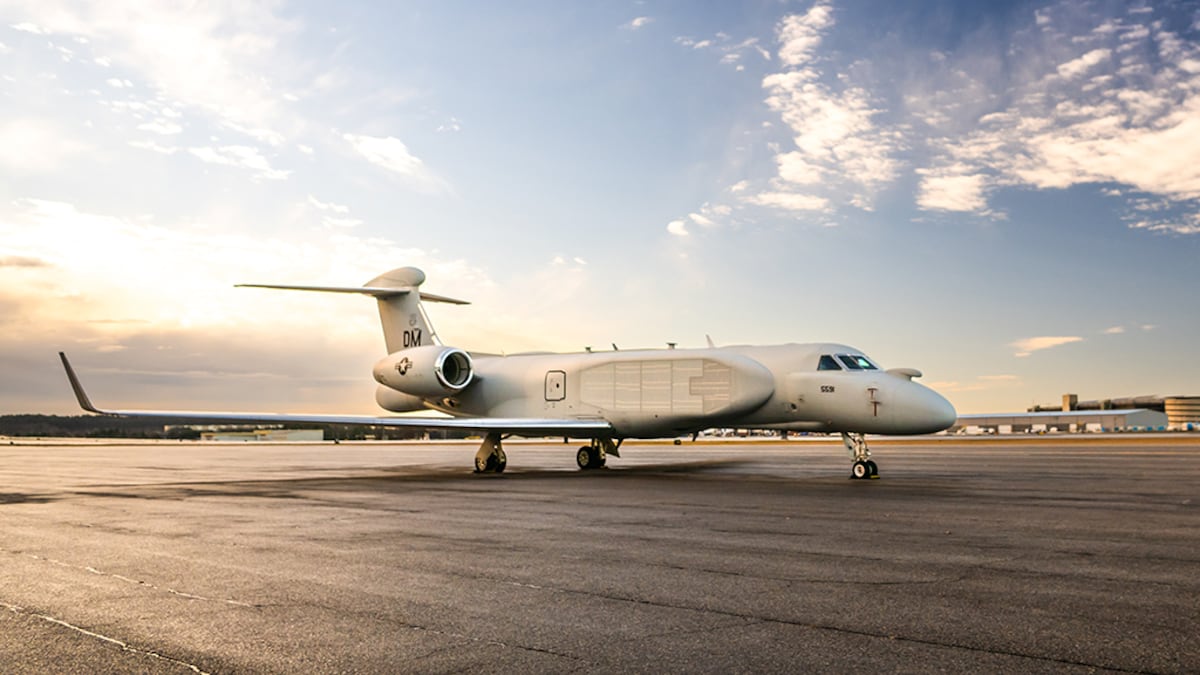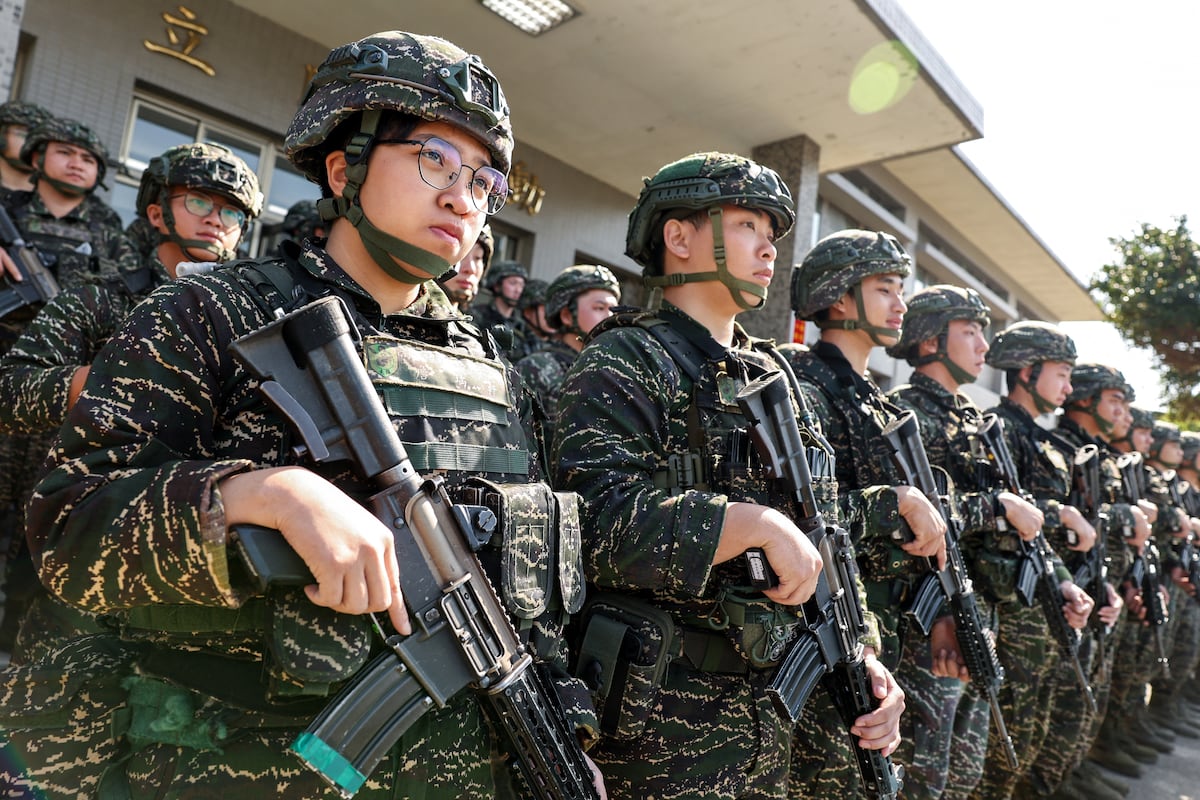BAE Systems and L3Harris are halfway through delivery of the Air Force’s planned fleet of 10 EA-37B Compass Call planes and expect to deliver the final five in 2027 and 2028.
The firms — co-prime contractors to create the next generation of electronic warfare aircraft — expect the market for Compass Calls to continue growing in years to come. In a Monday call with reporters, BAE and L3 officials said they see growing potential to sell Compass Calls to international customers and that the Air Force could increase its purchase of the planes.
The EA-37B is a heavily adapted Gulfstream G550 business jet loaded with electronic warfare equipment. It is designed to jam enemy communications, radar and navigation signals and allow airmen to defuse roadside bombs wirelessly. It will also block the ability of enemy air defenses to transmit information between sensors, control networks and weapons, allowing U.S. and partner aircraft to get closer to their targets.
It is replacing the Vietnam-era EC-130H Compass Calls, which were heavily used during the wars in Iraq and Afghanistan and are now being retired. The Air Force had 15 EC-130Hs in 2017, but that fell to four in 2024 and is set to keep dropping. The new Compass Call is projected to fly 40% faster than the EC-130H and cover twice the range, and have a top altitude that is nearly 15,000 feet higher than the older aircraft, L3Harris said.
The growing sophistication of the potential adversaries the U.S. and its allies might fight requires an electronic attack aircraft like the Compass Call, which is capable of countering multiple threats, L3 and BAE officials said.
“The [potential battlefield] environment is getting more and more complex every day,” Dave Harrold, vice president and general manager for countermeasure and electronic attack solutions at BAE, said. “When you think about countering enemy kill webs, it’s no longer a one-versus-one thing — it’s about being to persecute a variety of threats simultaneously.”
The State Department in October 2024 approved a $680 million sale of Compass Call planes to Italy. Harrold pointed to that foreign military sale as a sign of the plane’s expanding market.
“This isn’t just an important United States Air Force platform,” Harrold said. “It’s an ideal platform for our important allies as well. … We see the opportunity for that to be even more prolific internationally.”
Jason Lambert, L3Harris’s president of intelligence, surveillance and reconnaissance, said other unnamed international partners have expressed interest in buying their own Compass Calls. This would help improve interoperability between the U.S. and NATO fleets, he said.
However, the government’s studies have shown the planned fleet of 10 Compass Calls may not be enough to counter the projected future threats facing the Air Force, L3 and BAE officials said, and may need to be doubled to 20.
“The common message that we’re hearing, regardless of the study or regardless of the customer organization we speak with, 10 is not enough,” Lambert said.
BAE, L3Harris and Gulfstream proposed adding four new Compass Calls to the planned fleet, with the first two of those included in the Air Force’s unfunded priorities list in 2026.
Using the G550 business jet as the foundation of the Compass Call will make it easier to sustain and keep jets ready to fly, Lambert said. There are more than 600 G550s fielded worldwide, he said, and a well-established sustainment and spare parts network that can service planes in under 30 hours. He predicted this would result in aircraft availability in the high 90% range.
BAE builds the electronic attack components for the new aircraft. L3Harris focuses on converting the G550 jets into Compass Calls and integrates the equipment at its Waco, Texas, facility.
The final five Compass Calls are now having their outer mold lines modified to make room for the electronic attack equipment at Gulfstream’s Savannah, Georgia, facility, according to Lambert. The sixth Compass Call is expected to move to L3Harris’s Waco facility for further work in the second quarter of 2025.
Aircraft six, seven and eight are projected for delivery to the Air Force in 2027, and the final two are on track for a 2028 delivery, Lambert said.
The first two EA-37Bs that were delivered to the Air Force are now undergoing testing, according to Harrold. The third arrived at Davis-Monthan Air Force Base in Arizona — the new fleet’s future home — in August 2024, and airmen are now conducting pilot training with it. The fourth Compass Call is also now at Davis-Monthan, Harrold said.
The fifth Compass Call has been delivered to the Air Force, Lambert said, but is now receiving an upgrade.
Stephen Losey is the air warfare reporter for Defense News. He previously covered leadership and personnel issues at Air Force Times, and the Pentagon, special operations and air warfare at Military.com. He has traveled to the Middle East to cover U.S. Air Force operations.
Read the full article here








Leave a Reply